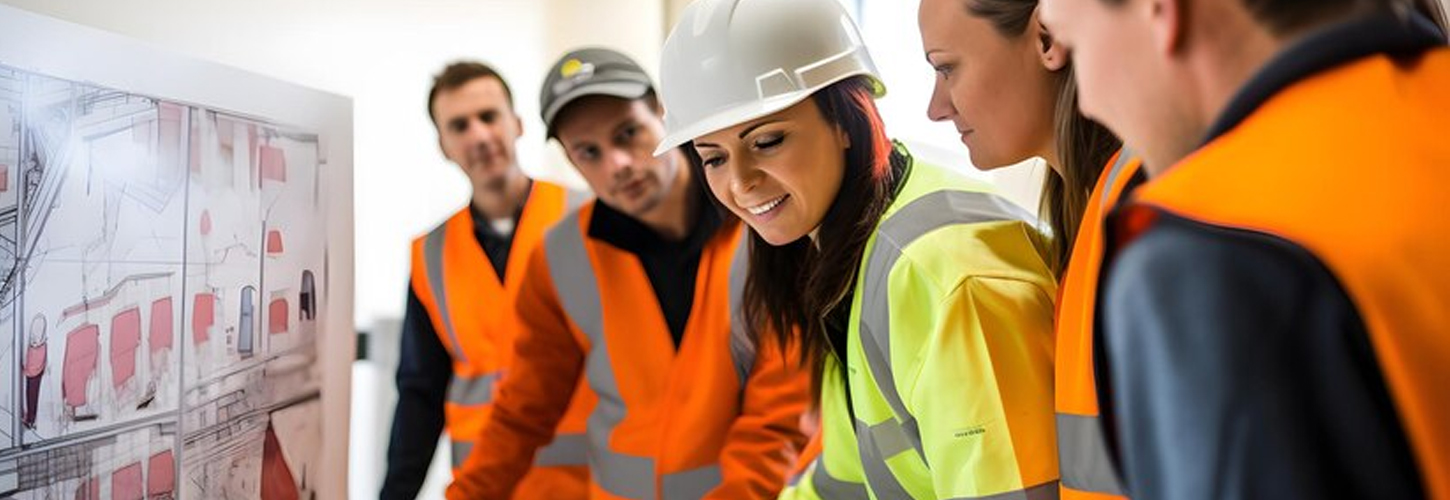Unlocking Safety Potential: 10 Keys to Captivating and Effective HSE Training
Green world group
| Harsh Kumar | January 11, 2024
Health, Safety, and Environment (HSE) training isn’t just a box to tick for regulations; it’s an investment in the well-being of your workforce and the sustainability of your organization. But crafting impactful training sessions that truly resonate with adult learners requires more than rote lectures and dry PowerPoint slides. To unlock the full potential of your HSE training, consider these 10 keys:
1. Hook ’em from the Start: Relevance is King
Forget generic introductions. Begin by establishing the immediate relevance of the training to your participants’ lives and work. Share a real-life incident, statistic, or even a personal anecdote that directly showcases the impact of unsafe practices or environmental damage. This sets the stage for engaged learning and demonstrates why paying attention matters.
Instead of a generic “Welcome,” imagine this:
A construction worker shares a near-miss experience, describing how a dropped tool almost injured his colleague. This instantly connects with other participants, reminding them of the real consequences of unsafe practices.
A short video showcases a local environmental clean-up project, demonstrating the tangible impact of responsible waste management. This sparks participants’ interest in environmental stewardship and its relevance to their daily lives.
2. Interactive Arena: Beyond Passive Consumption
Lectures may have worked in your school days, but adult learners crave engagement. Ditch the monologue and embrace interactive formats. Group discussions, brainstorming sessions, and role-playing scenarios bring abstract concepts to life, encouraging participants to actively think and share their experiences.
Forget the lecture format. Try these:
Divide participants into groups for a “Safety Jeopardy” game, testing their knowledge on hazard identification, emergency procedures, and PPE selection. The competitive spirit fuels engagement and reinforces key learnings.
Incorporate role-playing scenarios, simulating first-aid situations, chemical spill responses, or workplace conflict resolution. This hands-on approach allows participants to practice essential skills in a safe environment.
3. Show, Don’t Tell: The Power of Practicality
While theory lays the foundation, practical application is where HSE knowledge truly takes root. Incorporate simulations, demonstrations, and hands-on activities to give participants a chance to experiment with safety equipment, practice emergency procedures, and apply learned concepts in realistic scenarios.
Don’t just tell them how to use fire extinguishers, let them experience it:
Set up a simulated fire training area, allowing participants to extinguish miniature fires using different types of extinguishers. This practical experience builds confidence and familiarity with firefighting equipment.
For office safety training, organize an ergonomic workstation setup demonstration. Participants can then adjust their own workstations based on the principles learned, promoting immediate application of the training.
4. Attention Grabbers: Spice Up the Routine
Human attention spans are fickle. Break the monotony with attention-grabbing elements like short videos, quizzes, humor (tastefully used, of course!), and surprise guest speakers. Visual aids like infographics, mind maps, and interactive presentations can also engage different learning styles and keep eyes glued to the training.
Break the monotony with these tactics:
Start your session with a surprising statistic: “Did you know that slips and trips account for one in every three workplace accidents?” This grabs attention and sets the stage for discussing fall prevention strategies.
Incorporate humor (tastefully!): Share a funny cartoon related to a safety topic, injecting a light-hearted element while still reinforcing the message.
5. Feedback Loop: A Bridge to Understanding
Don’t just deliver information; create a two-way dialogue. Encourage questions, address concerns, and actively seek feedback throughout the session. This not only clarifies doubts but also helps you gauge understanding and tailor your material to real-world needs.
Foster a two-way conversation:
After explaining a complex procedure, pause for questions and clarifications. Don’t move on until everyone feels comfortable and confident.
Use online polls or anonymous feedback forms to gather participants’ thoughts and identify areas where they need further explanation or support.
6. Mind the Drift: Combating the Attention Gradient
Even the most captivating session can face an uphill battle against wandering minds. Be mindful of energy levels. Plan short breaks, incorporate movement activities, and vary teaching methods to keep the training dynamic and prevent attention from fading.
Keep them engaged with these strategies:
Plan short breaks every 45-60 minutes, allowing participants to stretch, grab a coffee, and refocus.
Incorporate movement activities like stretching exercises or guided relaxation techniques to re-energize participants and boost focus.
7. The Power of Stories: Relatable Lessons
Facts and figures are important, but stories have the power to move hearts and minds. Share compelling narratives of near misses, accidents averted, or environmental success stories. Relatable anecdotes make the abstract feel real and underscore the true impact of responsible HSE practices.
Weave in these storytelling elements:
Share a case study of an accident in a similar industry, highlighting the specific hazards and safety protocols that could have prevented it. This resonates with participants and drives home the importance of safety measures.
Tell a personal story of your own near-miss experience, showcasing the emotional impact of safety incidents and the value of safe practices.
8. Conciseness is Key: Bite-Sized Knowledge
Information overload is the enemy of engagement. Keep your sessions concise and focused, with clear takeaways and digestible chunks of information. Break down complex topics into smaller, manageable modules, and avoid bombarding participants with a long, drawn-out presentation.
Keep it focused and manageable:
Break down complex topics into smaller modules, each focusing on a specific theme or skill. This prevents information overload and allows for deeper understanding.
Use visual aids like infographics or mind maps to condense key points into easily digestible formats.
9. Stay Connected: Engagement Beyond the Session
The learning shouldn’t stop when the session ends. Encourage participants to stay connected through online forums, discussion groups, or even follow-up webinars. This maintains the momentum, facilitates peer-to-peer learning, and ensures knowledge retention in the long run.
Don’t let the momentum fade:
Create an online forum or discussion group where participants can share experiences, ask questions, and support each other in maintaining safe practices..
Send out periodic newsletters or blog posts featuring safety tips, success stories, and upcoming training opportunities.
10. Assessment: Building a Culture of Safety
Finally, make sure your training program isn’t just a tick-box exercise. Implement meaningful assessment strategies that go beyond simple multiple-choice quizzes. Consider scenario-based tests, practical skill evaluations, and group projects to gauge real understanding and application of learned concepts.
Go beyond basic tests:
Develop scenario-based assessments that require participants to apply their knowledge to real-life situations, demonstrating their ability to make safe decisions.
Consider peer evaluations where participants observe each other’s adherence to safety procedures and provide constructive feedback.
Bonus Tip : Don’t forget the power of recognition and rewards. Celebrating successful course completion or awarding certificates for exceptional performance incentivizes participation and reinforces the importance of HSE training.
By embracing these 10 keys, you can transform your HSE training sessions from dull obligations to engaging, impactful experiences. Remember, it’s not just about compliance; it’s about empowering your workforce with the knowledge and skills to prioritize safety, protect the environment, and contribute to a sustainable future for your organization.
Contact Us
Kindly call our Experts @ +91 8121563728 / +91 8015527650 or mail us @ kalyan.r@greenworldsafety.com / indumanasa.m@greenwgroup.com
Get Your Query Answered / Get Expert Assistance To Choose the Right Course for You Or Your Associates






